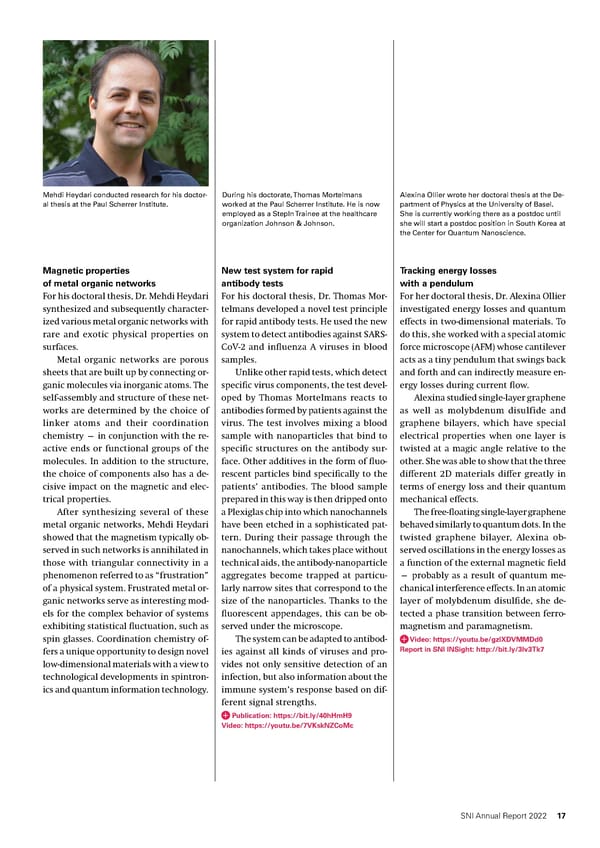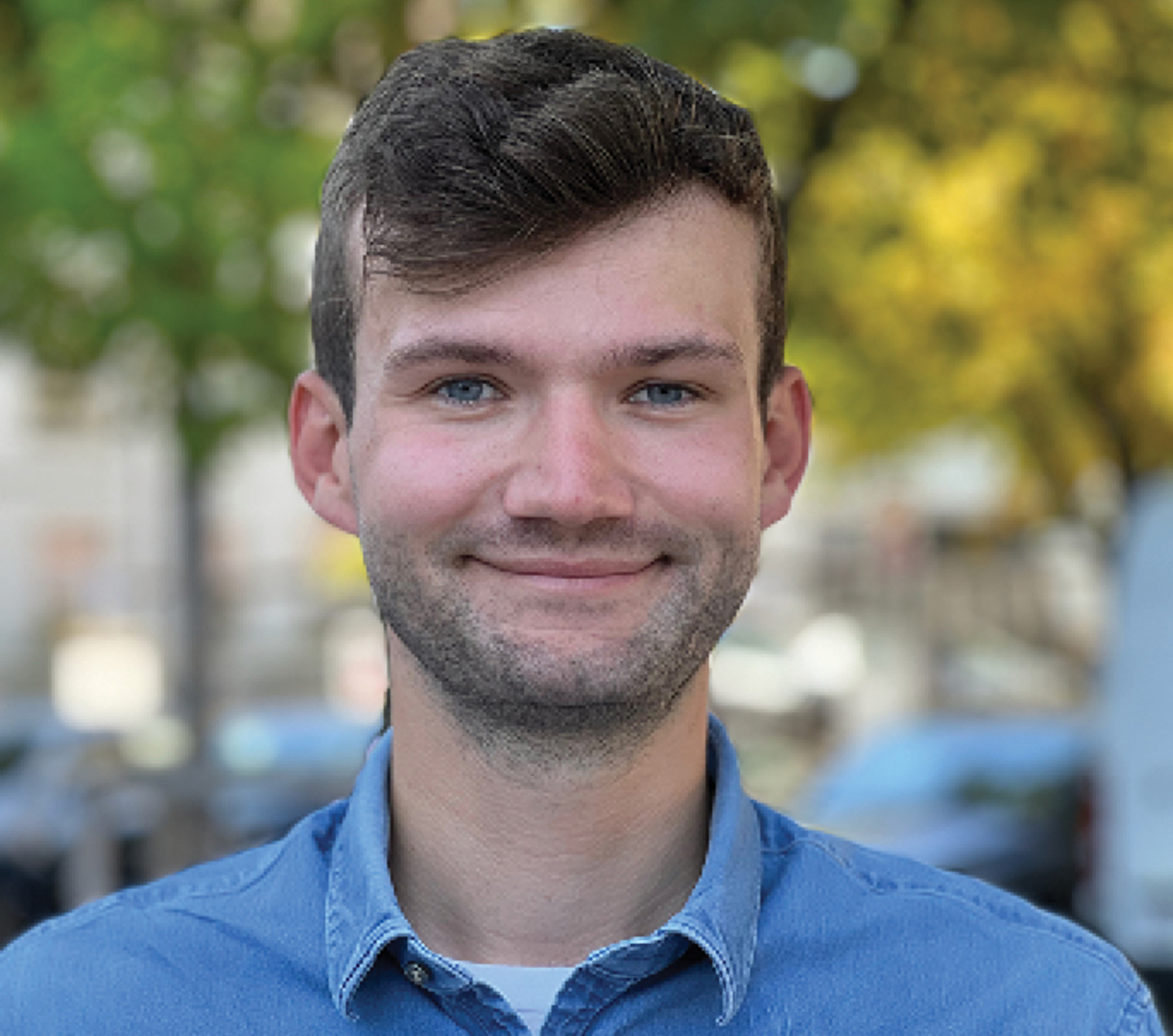Mehdi Heydari conducted research for his doctor- During his doctorate, Thomas Mortelmans Alexina Ollier wrote her doctoral thesis at the De- al thesis at the Paul Scherrer Institute. worked at the Paul Scherrer Institute. He is now partment of Physics at the University of Basel. employed as a StepIn Trainee at the healthcare She is currently working there as a postdoc until organization Johnson & Johnson. she will start a postdoc position in South Korea at the Center for Quantum Nanoscience. Magnetic properties New test system for rapid Tracking energy losses of metal organic networks antibody tests with a pendulum For his doctoral thesis, Dr. Mehdi Heydari For his doctoral thesis, Dr. Thomas Mor- For her doctoral thesis, Dr. Alexina Ollier synthesized and subsequently character- telmans developed a novel test principle investigated energy losses and quantum ized various metal organic networks with for rapid antibody tests. He used the new effects in two-dimensional materials. To rare and exotic physical properties on system to detect antibodies against SARS- do this, she worked with a special atomic surfaces. CoV-2 and influenza A viruses in blood force microscope (AFM) whose cantilever Metal organic networks are porous samples. acts as a tiny pendulum that swings back sheets that are built up by connecting or- Unlike other rapid tests, which detect and forth and can indirectly measure en- ganic molecules via inorganic atoms. The specific virus components, the test devel- ergy losses during current flow. self-assembly and structure of these net- oped by Thomas Mortelmans reacts to Alexina studied single-layer graphene works are determined by the choice of antibodies formed by patients against the as well as molybdenum disulfide and linker atoms and their coordination virus. The test involves mixing a blood graphene bilayers, which have special chemistry — in conjunction with the re- sample with nanoparticles that bind to electrical properties when one layer is active ends or functional groups of the specific structures on the antibody sur- twisted at a magic angle relative to the molecules. In addition to the structure, face. Other additives in the form of fluo- other. She was able to show that the three the choice of components also has a de- rescent particles bind specifically to the different 2D materials differ greatly in cisive impact on the magnetic and elec- patients’ antibodies. The blood sample terms of energy loss and their quantum trical properties. prepared in this way is then dripped onto mechanical effects. After synthesizing several of these a Plexiglas chip into which nanochannels The free-floating single-layer graphene metal organic networks, Mehdi Heydari have been etched in a sophisticated pat- behaved similarly to quantum dots. In the showed that the magnetism typically ob- tern. During their passage through the twisted graphene bilayer, Alexina ob- served in such networks is annihilated in nanochannels, which takes place without served oscillations in the energy losses as those with triangular connectivity in a technical aids, the antibody-nanoparticle a function of the external magnetic field phenomenon referred to as “frustration” aggregates become trapped at particu- — probably as a result of quantum me- of a physical system. Frustrated metal or- larly narrow sites that correspond to the chanical interference effects. In an atomic ganic networks serve as interesting mod- size of the nanoparticles. Thanks to the layer of molybdenum disulfide, she de- els for the complex behavior of systems fluorescent appendages, this can be ob- tected a phase transition between ferro- exhibiting statistical fluctuation, such as served under the microscope. magnetism and paramagnetism. spin glasses. Coordination chemistry of- The system can be adapted to antibod- Video: https://youtu.be/gzlXDVMMDd0 fers a unique opportunity to design novel ies against all kinds of viruses and pro- Report in SNI INSight: http://bit.ly/3lv3Tk7 low-dimensional materials with a view to vides not only sensitive detection of an technological developments in spintron- infection, but also information about the ics and quantum information technology. immune system’s response based on dif- ferent signal strengths. Publication: https://bit.ly/40hHmH9 Video: https://youtu.be/7VKskNZCoMc SNI Annual Report 2022 17
 SNI Annual Report 2022 Page 16 Page 18
SNI Annual Report 2022 Page 16 Page 18

